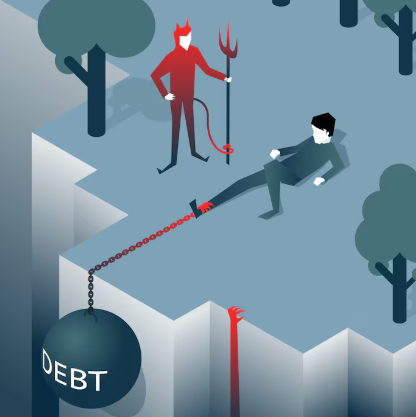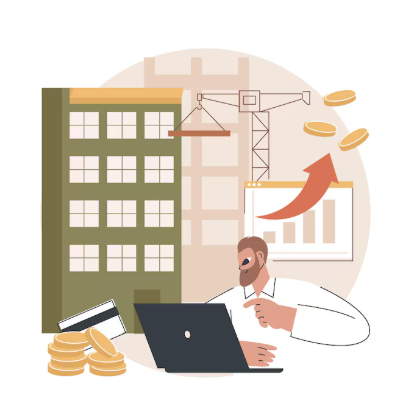October 29, 2025
Escaping de System: The New 1% Mindset ExplainedEscaping the System: The New 1% Mindset Explained

Key Highlights
- The traditional path to wealth—good grades, a steady job, and a 401k—is no longer a reliable strategy for financial freedom.
- Achieving true freedom means escaping "wage slavery" by building financial structures instead of chasing a higher salary.
- Business owners can legally minimize their tax burden by choosing the right type of business entity, such as a corporation.
- The new 1% mindset prioritizes cash flow and liquidity over debt-based assets like a primary residence with a large mortgage.
- Success requires a long-term commitment to building and optimizing your business structures, not a get-rich-quick approach.
- Flexibility is key; your business and residency structures must adapt to changing tax laws and economic conditions.
Introduction
You’ve been told the same story your whole life: get good grades, find a secure job, and patiently wait for retirement. But what if that system is broken? For many today, this path leads to a dead end of high taxes and stagnant wealth. True financial success isn't about a bigger paycheck; it's about building a smarter business structure that protects your personal assets and lets you keep more of what you earn. It’s time to stop playing a rigged game and start writing your own rules.
Challenging the Boomer Playbook: Why the System No Longer Works

The financial advice your parents followed is obsolete. The "Boomer Playbook" was designed for a different era, one with lower inflation, predictable pensions, and a more manageable tax system. Today, relentless economic shifts have dismantled that reality, leaving many hardworking people feeling stuck.
Stagnant wages and a crushing tax law mean that simply earning more often pushes you into a higher tax bracket without improving your quality of life. For business owners and professionals, following this old business plan is like trying to win today's race with yesterday's car. It’s time to explore why this system fails and what you can do about it.
The Rise and Limitations of the Traditional Path
The traditional career path promises stability, but it often delivers something else entirely: limitation. When you work for a salary, your personal income is taxed at some of the highest rates. Every raise you get is immediately reduced by the government before it ever hits your bank account, making it incredibly difficult to get ahead. This model puts a hard ceiling on your earning and wealth-building potential.
Even if you start a business as a sole proprietorship, you face significant risks. While easy to set up, this structure offers no separation between you and your business. This means your personal assets—your home, your car, your savings—are on the line if the business faces debts or lawsuits. Your business income is also tied directly to your personal tax return, meaning your taxable income grows, and so does your tax bill.
The fundamental drawback of this path is the lack of control. You are subject to your employer's decisions, government tax rates on salary, and personal liability for your business endeavors. It is a structure designed to keep you running in place, not to help you build lasting freedom.
How Economic Shifts Have Changed the Rules in Canada

In Canada, economic shifts have made the traditional wealth-building model particularly challenging. The federal government oversees a tax system where high earners can see a significant portion of their income go to taxes. From a tax perspective, simply earning a high salary is one of the least efficient ways to build wealth due to progressive income tax rates.
The promise of a secure retirement funded by government programs is also less certain than it was for previous generations. The tax treatment of investments and personal income has evolved, and the Canadian tax implications of every financial decision have become more complex. Relying on the old rules means you are likely paying far more in taxes than you need to.
These changes mean that you can no longer afford to be passive about your financial strategy. The rules have changed, and sticking to the old playbook is a recipe for financial stagnation. To succeed, you must understand the new landscape and use the available structures to your advantage.
Why Following the Old Advice Leads to Wage Slavery
What is wage slavery? It’s the cycle of working harder and earning more only to see your gains eaten up by taxes and inflation, forcing you to keep working just to maintain your lifestyle. You’re on a financial treadmill, and the speed keeps increasing. This is the predictable outcome of following outdated financial advice.
When you rely solely on a salary, you are trading your time for money in the least efficient way possible. For aspiring business owners, starting as a sole proprietorship or general partnership might seem easy, but it comes with a huge catch: unlimited personal liability. This means you are personally responsible for all of the business's debts.
This outdated approach keeps you trapped in several ways:
- High Tax Burden: Your income is taxed at the highest personal rates.
- Unlimited Liability: Your personal assets are at risk from business activities.
- Lack of Control: You are dependent on a single source of income and have no leverage to reduce your tax exposure legally.
Defining the New 1% Mindset and What Sets It Apart

The new 1% isn't defined by owning a yacht; it's defined by having freedom. It’s the ability to do what you want, when you want, without being tied to a job or a location. This mindset shifts the focus from accumulating possessions to building systems that generate wealth and protect it.
This approach prioritizes control and flexibility. Instead of just being an "owner," you learn to use the bundle of rights associated with different legal structures to your advantage. It’s about leveraging corporations and trusts to create limited liability, separating your business assets from your personal life, and building a financial fortress.
Moving from Ownership to Freedom
The old dream was to own a home. The system encourages you to take on a massive mortgage, tying you to a specific location and a steady job needed to pay for it. This version of "ownership" is actually a trap that limits your personal freedom and financial flexibility. It anchors you in one place, making it difficult to pivot or seize new opportunities.
The new mindset prioritizes freedom over this traditional form of ownership. Instead of locking up capital in real estate with heavy debt, the focus is on building cash flow and liquid business assets. This might still involve real estate, but it’s structured as an investment within a legal entity, designed to produce income, not just serve as a place to live.
This shift is crucial. When you control your assets through a smart business structure, you gain limited liability and the ability to move. If a tax jurisdiction becomes unfavorable, you can relocate your business or yourself. Freedom requires portability, and this mindset is all about creating wealth that can move with you.
Principles That Drive the Wealth Mindset Today

Today's wealth mindset is built on a few core principles that stand in direct opposition to traditional advice. It's not about working harder within the existing system; it's about redesigning your relationship with money, taxes, and work. This approach is proactive, strategic, and focused on long-term sustainability.
The central idea is to stop trading time for money and start building assets that work for you. This requires a fundamental shift in how you view income and expenses, particularly when it comes to taxes. Rather than seeing taxes as a fixed penalty, you see them as a variable expense that can be legally managed and minimized for tax purposes.
Key principles of this mindset include:
- Build Structures, Not Salaries: Focus your energy on creating a business structure that offers a lower tax rate and asset protection.
- Prioritize Cash Flow: Generate predictable income from business assets rather than relying on a single paycheck.
- Master Tax Strategy: Use legal entities to take advantage of deductions, credits, and favorable tax rates on capital gains.
- Maintain Flexibility: Avoid long-term debt and location dependency to stay agile and responsive to economic changes.
Comparing the New 1% With Conventional Success Models

The difference between the new 1% mindset and conventional success models is stark. One path leads to potential freedom, while the other almost guarantees a life of running on a financial treadmill. The conventional model is about compliance and fitting into a pre-defined system, while the new mindset is about leverage and designing your own system.
Traditional success is measured by your job title and salary, often detailed on personal tax returns. The new 1% measures success by net worth, cash flow, and, most importantly, personal freedom. This isn't just a difference in goals; it's a completely different operational playbook.
The following table breaks down the core differences in approach and thinking between these two models.
Feature
Conventional Success Model
The New 1% Mindset
Primary Goal
High salary, job security
Personal freedom, control of time
Financial Focus
Saving a portion of salary
Building cash-flowing assets
Primary Asset
Mortgaged primary residence
A flexible business structure
View of Taxes
A necessary evil to be paid
A manageable expense to be minimized
Measure of Success
Gross income, job title
Net worth, liquidity, free time
Breaking Down Wage Slavery: Spotting the Modern Trap

Wage slavery is the modern trap that keeps even high-earners from achieving true wealth. It’s a cycle where you work for a salary, pay a large portion of it in income tax, and use what's left to cover expenses, leaving little for meaningful wealth creation. You are chained to your job because you need the next paycheck to sustain your lifestyle.
This isn't about how much you earn; it's about how your income is structured. Business income can be strategically managed, but a salary is taxed before you even see it. Recognizing you’re caught in this trap is the first step toward breaking free. The next sections will help you identify the signs and understand the psychological barriers that keep you there.
Signs You’re Stuck in Wage Slavery
Are you caught in the wage slavery trap? It can be hard to recognize, especially if you have a high-paying job and a comfortable lifestyle. The chains of modern wage slavery are often golden, making them feel more like rewards than restraints. However, the feeling of being stuck is a powerful indicator that something is wrong.
The core issue is a lack of control over your time and finances. Despite a high salary, you may feel like you’re living paycheck to paycheck, with your personal income barely covering your mortgage, car payments, and other obligations. This financial pressure makes the thought of leaving your job terrifying, even if you’re unhappy.
Look for these warning signs in your own life:
- Your lifestyle increases with every raise, but your savings rate doesn't.
- You feel anxious about monthly bills despite earning a good salary.
- The idea of taking a year off from work is financially impossible.
- You have no significant income source outside of your primary job.
- You operate your side business with unlimited liability, risking personal assets.
The Psychological Barriers to Escaping the Cycle

Escaping the system is as much a mental challenge as it is a financial one. Society has trained us to value security above all else, making the leap into entrepreneurship feel like an unacceptable risk. The comfort of a predictable personal income, even if it limits your potential for financial success, is a powerful force that keeps people stuck.
Fear is the biggest barrier. There's the fear of failure, the fear of losing your personal assets, and the fear of the unknown. Your risk tolerance has been conditioned to be low. The system is designed to make you believe that the only safe path is the one where you work for someone else.
Breaking free requires you to unlearn these lessons. It means embracing calculated risks, redefining your idea of security, and developing the confidence to build something of your own. You must shift your mindset from seeking safety in a paycheck to creating safety through smart, resilient financial structures.
Real-World Examples of the Wage Slavery Treadmill
Consider a doctor or lawyer earning a high salary. They appear successful, but they are often prime examples of the wage slavery treadmill. After years of expensive education, they start their careers with massive debt. To pay it off, they take a high-paying job, buy a nice house and car, and quickly find their expenses rising to match their income.
Their salary is taxed at the highest rates, and they have little control over their business operations or schedule. Even if they form a general partnership with colleagues, they can be held liable for the business debts and mistakes of their partners. They work long hours but see a fraction of their earnings go toward building actual wealth.
This individual is trapped. They are making a lot of money on paper, but after taxes, debt payments, and lifestyle costs, there is little left. They can't afford to stop working because the entire financial structure they've built depends on their next paycheck. They have a high income but zero freedom.
Building Financial Structures Instead of Chasing Salaries

The solution to escaping wage slavery is to stop chasing a higher salary and start building financial structures. A salary is active income that is highly taxed and dependent on you trading your time for money. A financial structure, like a corporation or trust, is a legal entity designed to hold assets and generate income more efficiently.
This is the fundamental pivot that separates the wealthy from everyone else. Business owners who use these structures gain powerful advantages, including limited liability and significant tax benefits. It’s time to stop being just an employee and start acting like an architect of your own financial future. The following sections will explain how.
The Advantage of Businesses Over High-Paid Jobs
Owning a business provides advantages that a high-paying job can never offer. The most significant is control over your income and tax obligations. As an employee, your salary is taxed before you get it. As a business owner, your company earns revenue, pays its expenses, and is then taxed on the remaining profit. This simple difference is profound.
This means you can legally deduct a wide range of business expenses—from office supplies and software to travel and professional development—before your income is taxed. This lowers your taxable business income and, therefore, your tax bill. This is a level of control that employees simply do not have.
Furthermore, owning business assets through the right type of entity protects you personally. If the business is sued or incurs debt, your personal assets are shielded. A high-paid employee has no such protection. Building a business isn't just about creating a new income stream; it's about building a more resilient and efficient financial life.
Essential Financial Structures for Canadians (LLCs, Corporations, Trusts)

In Canada, choosing the right business structure is the first step toward financial freedom. While the US has the popular Limited Liability Company (LLC), Canada has its own set of powerful entities. Understanding these types of business entities is crucial for any aspiring entrepreneur.
A corporation is a separate legal entity from its owners, offering the strongest form of limited liability. This means your personal assets are protected from the company's debts. Corporations also generally pay a lower tax rate than individuals, allowing you to reinvest more money back into the business. Trusts are another powerful tool, often used for asset protection and estate planning.
Here are some essential structures for Canadians:
- Sole Proprietorship: Simple to set up but offers no liability protection.
- Partnership: Involves two or more owners. General partnerships have unlimited liability, while limited liability partnerships (LLPs) offer protection but are restricted to certain professions.
- Corporation: A separate legal entity that provides limited liability and significant tax advantages.
- Trust: A flexible structure for holding assets and distributing income, often used in conjunction with a corporation for advanced tax planning.
Foundation Steps to Start Creating Flexible Structures

Ready to start building? The first step is to move from idea to action with a clear business plan. This document doesn't need to be 100 pages long, but it should outline your goals, target market, and how you plan to generate revenue. This is your roadmap and will be essential for making strategic decisions.
Next, think about the legal entity that will house your business. For most, this means moving beyond a sole proprietorship. If you have partners, a detailed partnership agreement is non-negotiable to prevent future disputes. If you're incorporating, you'll need to choose a business name and decide whether to incorporate federally or provincially.
While you can do some of this yourself, this is the point where professional advice becomes invaluable. A lawyer can help you set up the legal entity correctly, and an accountant can advise on the best structure for your specific situation. Getting the foundation right is the most important step in building a structure that provides lasting freedom.
Tax Minimization Strategies the New 1% Use
The wealthy don't get rich by earning more; they get rich by keeping more of what they earn. This is achieved through strategic tax minimization. This isn't about illegal tax evasion but about legally using the tax law to your advantage. The government creates rules and incentives, and the new 1% learn to play the game better than anyone else.
By choosing the right business structure and tax status, you can significantly reduce your overall tax burden. This allows you to reinvest more capital into your business, accelerating your path to financial freedom. Let's look at some of the structures and methods they use to accomplish this.
Understanding Canadian Tax Implications by Entity Type

In Canada, your choice of business entity has direct and significant tax implications. A sole proprietor reports all business income on their personal tax return, meaning profits are taxed at their marginal personal income tax rate. This is simple but becomes very inefficient as income grows.
Partnerships operate similarly, with each general partner reporting their share of the income on their personal returns. Corporations, however, are treated differently. A Canadian-controlled private corporation (CCPC) benefits from the small business deduction, which offers a much lower corporate tax rate on the first $500,000 of active business income. This is a massive advantage.
The table below summarizes the key tax differences. Understanding these is the first step in choosing a structure that minimizes your Canadian tax burden.
Business Entity
Tax Treatment
Key Tax Implication
Sole Proprietorship
Income is taxed on your personal return.
All profits are taxed at your personal income tax rate, which can be high.
General Partnership
Each partner reports their share of income personally.
Partners are taxed at their individual rates; no access to lower corporate rates.
Corporation
The corporation files its own tax return and pays corporate tax.
Access to lower corporate tax rates on business income; owners are taxed only on salaries or dividends they take.
Common Methods to Legally Reduce Your Tax Burden

Once you have the right corporate structure, you can use several proven methods for legal tax planning. These strategies are not secrets; they are tools available to any business owner who takes the time to learn and apply them. The goal is to lower your taxable business income and take advantage of preferential tax rates.
One of the most effective strategies is paying yourself a strategic mix of salary and dividends. A salary is a deductible expense for the corporation, while dividends are paid from after-tax profits but are often taxed at a lower personal rate than salary income. Finding the right balance can save you thousands.
Here are other common methods:
- Income Splitting: Pay family members a reasonable salary for work they do for the business, shifting income to individuals in lower tax brackets.
- Maximizing Deductions: Diligently track and claim all eligible business expenses to reduce your corporation's taxable income.
- Capital Gains: Structure the sale of assets to be taxed as capital gains, which are taxed at a lower rate than regular income.
- Reinvesting Profits: Keep profits inside the corporation to grow tax-deferred, rather than taking it all out as personal income.
Using Residency and Entities for Optimal Tax Positions
For those looking to achieve the highest level of financial efficiency, optimizing your residency and business entity location is an advanced strategy. Your tax status is often determined by where you live. By establishing residency in a low-tax jurisdiction, you can dramatically reduce the personal income tax you pay on income drawn from your business.
This strategy involves separating where you live from where your business operates. You might have a separate legal entity, like a corporation, registered in Canada to serve Canadian clients, but you could be a resident of a country with zero income tax. This allows your corporation to benefit from Canada's business environment while you personally benefit from a friendlier tax perspective.
This is a complex area of tax law that requires expert planning. However, it demonstrates the ultimate principle of the new 1% mindset: flexibility. By not being tied to any single country's tax system, you can position yourself to thrive regardless of political or economic changes. It is the ultimate expression of financial freedom.
From Debt Traps to Cash Flow: Ditching the Mortgage Mindset

The old playbook tells you that your home is your greatest asset. The new mindset recognizes that a mortgage is often your greatest liability. The mortgage mindset encourages you to take on massive debt, which anchors you to a job and a location, draining your cash flow for decades.
True financial freedom comes from prioritizing cash flow and liquidity. Instead of tying up your capital in an illiquid asset like a primary home, the focus is on acquiring assets that generate more cash. This section explores how to break free from the debt trap and build a portfolio that fuels your freedom.
How Debt Anchors Your Freedom and Wealth Potential
Debt is the anchor that keeps you from sailing toward financial freedom. Whether it's personal debts like mortgages and car loans or certain types of business debts, owing money to others severely restricts your options. It forces you to prioritize serving your creditors over pursuing your own goals.
A large mortgage is the most common anchor. It locks you into a specific location and requires a consistent, predictable income to service the payments. This makes it difficult to take risks, start a new venture, or move to a more favorable tax jurisdiction. You become a servant to the bank and your employer.
Even in business, not all debt is created equal. While some loans are necessary for growth, a poorly structured business plan can lead to overwhelming debt that sinks the company. For limited partners in a venture, this might be manageable, but for a general partner, it can lead to personal financial ruin. The key is to use debt sparingly and strategically, never letting it compromise your freedom of movement.
Why Cash and Liquidity Matter More Than Assets on Paper

Your net worth on paper can be misleading. If most of your wealth is tied up in illiquid assets like your primary residence or private company stock, you have a high net worth but very little flexibility. This is "paper wealth." When an opportunity or a crisis arises, you can't easily use that wealth.
Cash and liquidity, on the other hand, provide ultimate power. Liquidity is the ability to convert an asset into cash quickly without losing its value. Cash allows you to seize investment opportunities, navigate economic downturns, and make bold moves, like starting a new business or changing your residency for tax purposes.
The new 1% mindset understands this distinction perfectly. They prioritize building a strong cash position and holding liquid assets. While they may own real estate and other business assets, their financial foundation is built on a bedrock of liquidity that gives them the freedom to act decisively.
Building Portable Wealth With Smart Asset Choices

Portable wealth is wealth that is not tied to a single physical location. In an increasingly globalized and uncertain world, this is the most resilient form of wealth you can build. It’s about owning assets that can move with you or be managed from anywhere in the world.
Think beyond traditional assets like local real estate. Portable wealth includes things like intellectual property (trademarks, copyrights), online businesses that serve a global market, and a portfolio of publicly traded stocks and bonds. These assets aren't dependent on a local economy or political climate. You can structure the ownership of a trade name or software within a legal entity that can be relocated if tax laws change.
Building portable wealth is a strategic choice. It requires you to consciously select assets that offer flexibility. By focusing on portability, you are building a financial life that is anti-fragile—one that not only withstands shocks but can actually become stronger because of them.
Conclusion

In conclusion, embracing the New 1% Mindset means breaking free from outdated beliefs and financial strategies. By challenging the traditional paths that lead to wage slavery, you can redefine success through freedom and flexibility. Focus on building structures that generate wealth rather than chasing higher salaries, and prioritize cash flow over burdensome debt. Remember, achieving financial freedom is a long-term commitment that requires persistence and adaptability. If you're ready to take the first step toward this transformation, book a consultation with us today and start crafting your escape blueprint. Your journey to financial independence is just a conversation away!
Frequently Asked Questions
Can I change my business entity type later if I discover a better structure?
Yes, you can change your business entity type, but it's not always simple. Transitioning from a sole proprietorship to a corporation, for example, involves legal paperwork and has tax implications. It’s often complex and costly, so it's best to consult a professional to choose the right legal entity from the start.
How does the choice of business structure impact my ability to raise capital in Canada?
Your business structure significantly impacts your ability to raise capital. Corporations are generally the most attractive to investors because they can issue shares and offer limited liability. Sole proprietorships and partnerships often find it much harder to secure funding from investors who want equity and protection for their business assets.
What are the key legal requirements when setting up different financial structures here?
Legal requirements vary by the type of entity. A sole proprietorship requires little more than registering a business name, while a corporation involves filing articles of incorporation with the federal government or a province, creating bylaws, appointing directors, and filing an annual report to maintain its status as a legal entity.
The Long-Term Wealth Play: Staying Persistent and Adaptable
Building true wealth is a marathon, not a sprint. The new 1% mindset is a long-term play that requires persistence and adaptability. Your initial business plan will evolve, and your net worth will grow over years of consistent effort, not months of wishful thinking. A changing tax perspective requires you to adapt.
Avoiding the Quitting Cycle, Building Wealth Over Years, Not Months
Many aspiring business owners quit too early, often within the first year. Financial success rarely happens overnight. You must be prepared to persist through the challenging early years, manage business debts wisely, and stay committed to your vision. The tax law rewards those who build sustainable businesses over the long term.
Reviewing and Optimizing Financial Structures Regularly
Your business structure is not a "set it and forget it" decision. You should review it annually with your board of directors or advisors to ensure it still aligns with your business plan and goals. As your income grows or tax laws change, you may need to optimize your structure for continued financial success and tax status.
Incorporating Flexibility to Weather Policy and Economic Shifts
The only constant is change. A flexible legal entity and financial plan allow you to adapt to new government policies, economic shifts, and changes in tax law. Avoid rigid structures like a restrictive partnership agreement that could hinder your ability to pivot when necessary. Flexibility is your best defense against uncertainty.
Avoiding Common Mistakes When Shifting to the New 1% Mindset
A common mistake is focusing only on creating a business structure without changing your spending habits. Another is underestimating your tax burden by not setting aside enough for taxes. You must protect your personal assets by respecting the corporate veil and avoiding personal liability to truly increase your net worth.
Pitfalls When Choosing or Structuring Entities
A major pitfall is choosing a general partnership when you need limited liability, exposing yourself to the debts of your partners. Another is failing to fund your corporation properly, which can reduce its protective benefits. Incorrectly structuring your entity can lead to a higher tax burden and negate the benefits of incorporation.
Overlooking Cash Flow Versus Focusing Only on Net Worth
Focusing solely on net worth, especially when it's tied up in illiquid business assets, is a classic mistake. True financial success and freedom come from strong, predictable cash flow. Liquidity gives you options and resilience, while a high net worth on paper can leave you cash-poor and unable to act.
Underestimating the Value of Professional Advice
Trying to navigate complex tax law and corporate structuring on your own to save a few dollars is a costly mistake. A professional accountant and lawyer can help you create a business plan and structure that saves you far more in the long run, ensuring you avoid pitfalls related to personal income tax.
Bringing It All Together: Designing Your Own Escape Blueprint
Your escape blueprint is a personalized business plan that combines the right business structure with your financial goals. It respects the bundle of rights that come with ownership and uses limited liability to protect you. This blueprint is your path to achieving financial success on your own terms.
Recapping Key Shifts to Achieve Lasting Freedom
To achieve lasting personal freedom, shift your focus from salary to structures, from debt to cash flow, and from short-term gains to long-term persistence. For business owners, adopting a tax perspective that prioritizes legal minimization is crucial. This new approach is the foundation of a higher net worth and a freer life.
Practical Next Steps for Canadians Ready to Break Out
Ready to start? Begin by outlining a simple business plan. Next, research the best business entity for your situation in Canada. Finally, book a consultation with a lawyer and an accountant. Taking professional advice is the most important step in turning your plan to create a new legal entity into a reality.
Resources to Support Your Journey Toward the New 1%
Your journey requires the right tools. Seek out books and courses on tax planning for Canadian business owners. Connect with mentors who have successfully built their own business structures. Most importantly, build a team of professional advisors to guide your business operations and help you use your legal entity for tax purposes effectively.
Follow The Jerz Way
02
Action Plan & Document Collection
We create a tailored action plan aligned with your chosen service(s). This stage includes gathering required documents and handling essential tasks such as translations, apostilles, and genealogical research.
